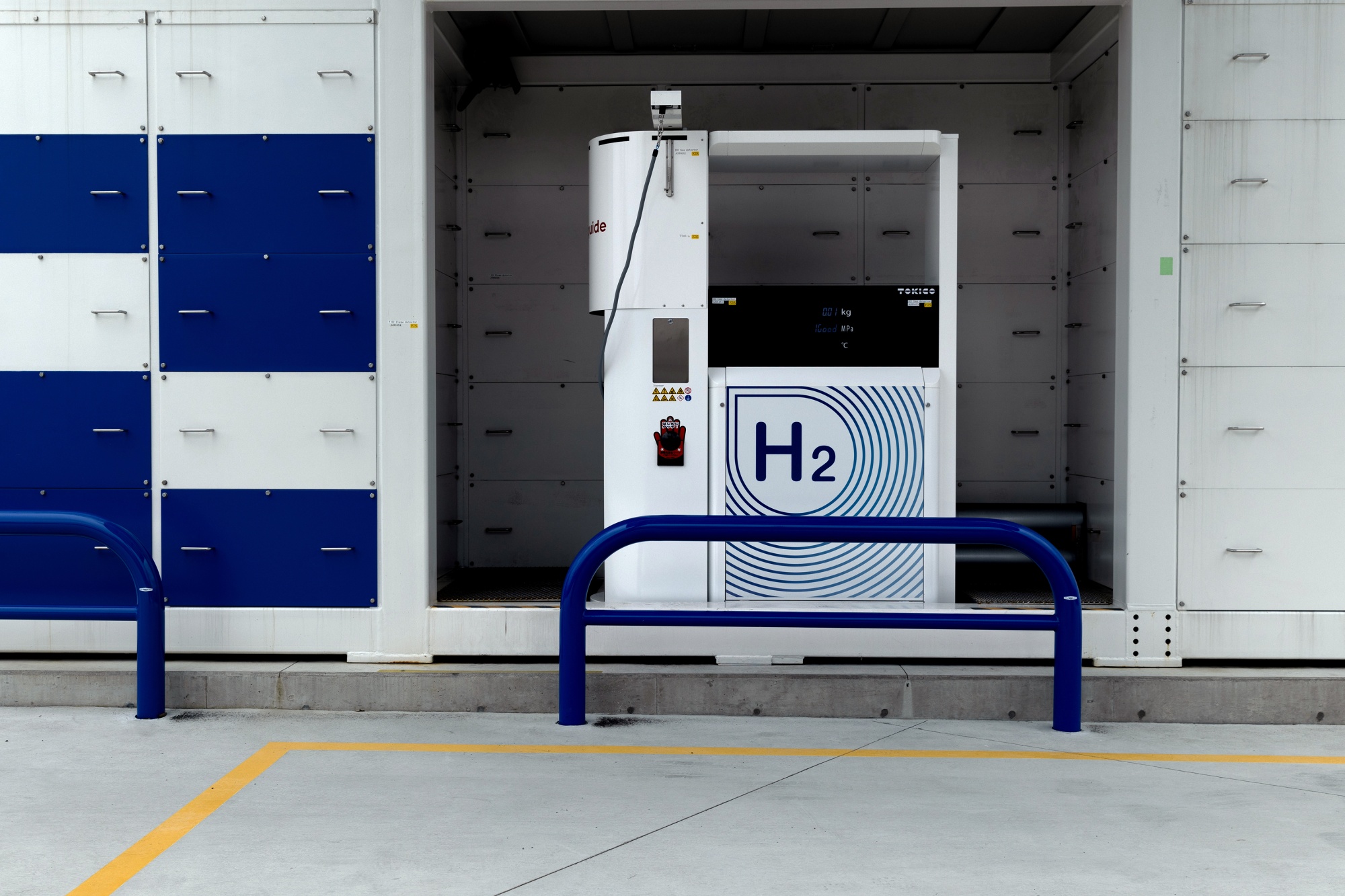
The basic strategy in the fight to limit climate change is to power everything with electricity, generated from wind, solar or other clean sources. But there’s a problem: Some things can’t easily run on electricity. Think steel mills, cement plants and long-distance passenger jets — they need a clean fuel that can be stored and burned, sometimes at high temperatures. This is where hydrogen comes in. Depending on who you ask, this controversial technology is either a crucial piece of the puzzle to reduce greenhouse gases or an over-priced, over-hyped distraction. For now, though, the industry is awaiting detailed guidance on government tax breaks and subsidies, which have the potential to make hydrogen viable for the first time.
1. Why hydrogen?
Electricity can’t provide the intense heat needed for industrial processes like making steel or concrete. Similarly, planes and boats can run on electricity for short hops, but batteries that could power long-distance trips don’t yet exist. Hydrogen could clean up each of these hard-to-abate cases. It can be burned without producing CO2, or it can be fed into a device called a fuel cell, which generates electricity through an electro-chemical reaction rather than combustion. Airplanes, cargo ships and trains could conceivably run on fuel cells paired with hydrogen storage tanks, giving them a way to eliminate their carbon emissions without the need to stop and recharge.
2. How is hydrogen made?
Hydrogen is the universe’s most abundant element, but generally must be extracted from other compounds to be used as a fuel. There are different types, known by different colors on a wheel of shades used to label different ways to produce hydrogen:
- Gray hydrogen: The vast majority of hydrogen made today is stripped from natural gas in a process that gives off carbon dioxide. It’s called gray hydrogen.
- Blue hydrogen: Capture the carbon dioxide from gray hydrogen rather than letting it vent into the atmosphere, and you get blue hydrogen. Germany, for example, plans to import blue hydrogen via pipeline from Norway as a way to kickstart the shift to hydrogen, before switching to cleaner hydrogen production methods in the future.
3. What are the other types?
- Green hydrogen: Green hydrogen comes from using renewable power to run a machine called an electrolyzer that splits water into hydrogen and oxygen — a process free of greenhouse gases.
- Pink hydrogen: Run the electrolyzer on nuclear power, and it’s pink hydrogen.
- White hydrogen: Many companies are also searching for underground deposits of naturally occurring hydrogen — sometimes referred to as white hydrogen, gold hydrogen or geologic hydrogen.
Gray is by far the cheapest type of hydrogen to produce today, costing from $0.98 to $2.93 per kilogram, according to BloombergNEF analysis. Blue hydrogen currently costs $1.80 to $4.70 per kilogram, while green can run anywhere from $4.50 to $12.00 per kilogram. But BNEF expects those figures to change rapidly, with green hydrogen undercutting gray in most of the world by 2035.
4. Why the big debate about hydrogen?
Widespread use of hydrogen requires a whole new infrastructure to produce the fuel, transport it to customers and burn it. A steel mill can’t just put hydrogen into a blast furnace designed around coal, and a power plant can’t burn hydrogen in a turbine built for natural gas. Switching will require new equipment – a big upfront expense. Transporting hydrogen in pipelines meant for gas is tricky, because hydrogen can leak through seals designed to hold larger methane molecules. And hydrogen leaked into the atmosphere acts as an indirect greenhouse gas, triggering chemical reactions that can trap heat. Some other ways to move hydrogen, like super-cooling it to compress it, are energy-intensive and expensive. As supply comes online, it’s not clear that the demand will be there. So far, chemical makers account for about two-thirds of announced projects to retrofit factories to burn hydrogen, and many of those have no start date. Still, hydrogen’s versatility — it has the potential to decarbonize multiple industries, sometimes in multiple ways — drives interest from a wide range of startups, along with big oil companies and industrial gas suppliers.
5. Who are the non-believers?
There are many obstacles to building a hydrogen-based economy from scratch, and skeptics question whether it can — or should — happen at all. The massive cost of electrolyzers and the variability of renewable power will make it hard for green hydrogen to be competitive anytime soon. That dynamic led the founder of UK hedge fund Argonaut Capital Partners to call short-term hydrogen investments “a complete waste of time.” Some environmentalists, meanwhile, label hydrogen a “false solution” to climate change, saying gray and blue hydrogen would just extend the use of natural gas, while green hydrogen would strain water supplies. A previous wave of hydrogen enthusiasm in the late 2000s and early 2010s — focused on using the fuel for cars and pushed largely by Toyota Motor Corp. — fizzled as consumers ignored the vehicles. Now, fuel cells for trucks are getting a second look.
6. Will hydrogen be adopted anyway?
Maybe. The US and the European Union have made hydrogen a key part of their carbon-cutting plans, and they’re offering big financial incentives to gear up production. Available subsidies for hydrogen projects globally topped $280 billion in mid-2023, according to BNEF, an increase of 43% from the end of 2022. In the US, the Inflation Reduction Act offers a production tax credit of as much as $3 per kilogram, though producers are still waiting for details on how much of a subsidy will be available to each hydrogen production method. The US government also plans to spend at least $7 billion establishing a series of hydrogen hubs across the country, pairing new hydrogen production with companies wanting to use the fuel. The EU aims to produce 10 million tons of green hydrogen by 2030, while importing another 10 million tons. China offers to subsidize 15% of capital expenses for new clean hydrogen projects, with a cap of about $41 million per project, although BNEF estimates the incentive is too low to make much difference. The International Energy Agency’s roadmap for reaching net zero emissions by 2050 calls for hydrogen to supply 10% of the world’s energy needs that year.
7. Who’s building the hydrogen economy?
Equipment makers such as Bloom Energy Corp. and Plug Power Inc. sell electrolyzers and fuel cells, and Plug is also building its own hydrogen production plants. These businesses face competition from China, where companies such as Longi Green Energy Technology Co. and Shandong Saikesaisi Hydrogen Energy are looking to expand international sales of their own electrolyzers. Industrial gas companies such as Air Liquide SA see hydrogen as a natural extension of their existing businesses. And oil companies, who already use hydrogen in their refineries, are getting into the game as well. Chevron Corp. recently announced it had bought a 78% stake in what is expected to be the world’s largest hydrogen production and storage facility, in Utah. Although financial terms were not disclosed, the project has already received a $504 million loan from the US Energy Department. In addition, Rolls-Royce and airline easyJet last year said they had successfully tested a jet engine that burned hydrogen rather than jet fuel.
The Reference Shelf
Share This:
Next Article




